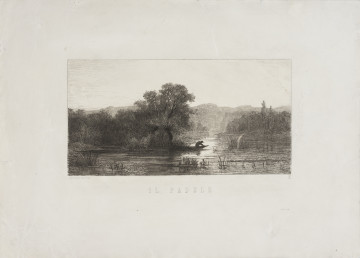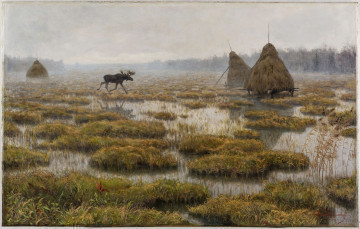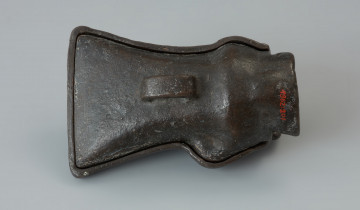
Il Padule | Swamp
1870
National Museum in Szczecin
Part of the collection: European classics of modernity
Max Kühn was born into a family running a tailor's shop in Szczecin. The future artist was also prepared for this profession, drawing on his cuffs in the traditional Turkish sit on the cutting room table. Thanks to the intercession of one of his father's clients, he was finally able to abandon his apprenticeship in order to study at the training centre at the Berlin Museum of Applied Arts between 1911 and 1914. After completing his studies, he returned to Szczecin, where he occupied a studio in Kaiser-Wilhelm-Straße (today's Lotników Square) until 1945. He specialised in landscapes and vedutas, which he had already created before he left for the capital, probably inspired by a teacher at the city grammar school, Theodor Kugelmann. In the 1920s, he often went on excursions to the countryside, which resulted in series of drawings and oil paintings. Following in the tradition of the North German Romantics - led by Caspar David Friedrich - Kühn chose motifs that were not only visually appealing but also important for historical and political reasons. One of them was Pejzaż bagienny z okolic Kopytnika [The Swamp Landscape from the area of Kopytnik] in the Drawsko region, immortalised on a July day in 1926. The German name of the settlement, Manhagen, meaning a defensive place in the forest, was probably a testimony to the 13th century Saxon colonisation. Identical names were given to border towns in a wide belt from Mecklenburg, via Rügen to Pomerania posterior. The borderland and expansionist discourse were one of the strongest in the inter-war period, especially in the Borderland of Posen-Westpreußen (Grenzmark Posen-Westpreußen), which included the area of historic Pomerania with Drawsko and bordered Greater Poland and the Polish Pomeranian Voivodship. Capturing the beauty of the marshy landscape with its purple sky and reddening blades of grass had therefore patriotic overtones, indicating the long history of German settlement in this area.
Szymon Piotr Kubiak
Author / creator
Dimensions
cały obiekt: height: 65,5 cm, width: 96,5 cm
Object type
painting
Creation time / dating
Creation / finding place
Identification number
Location / status

1870
National Museum in Szczecin

1903
National Museum in Lublin

around 750 p.n.e. — 550 p.n.e.
National Museum in Szczecin
DISCOVER this TOPIC
Castle Museum in Łańcut
DISCOVER this PATH
Educational path